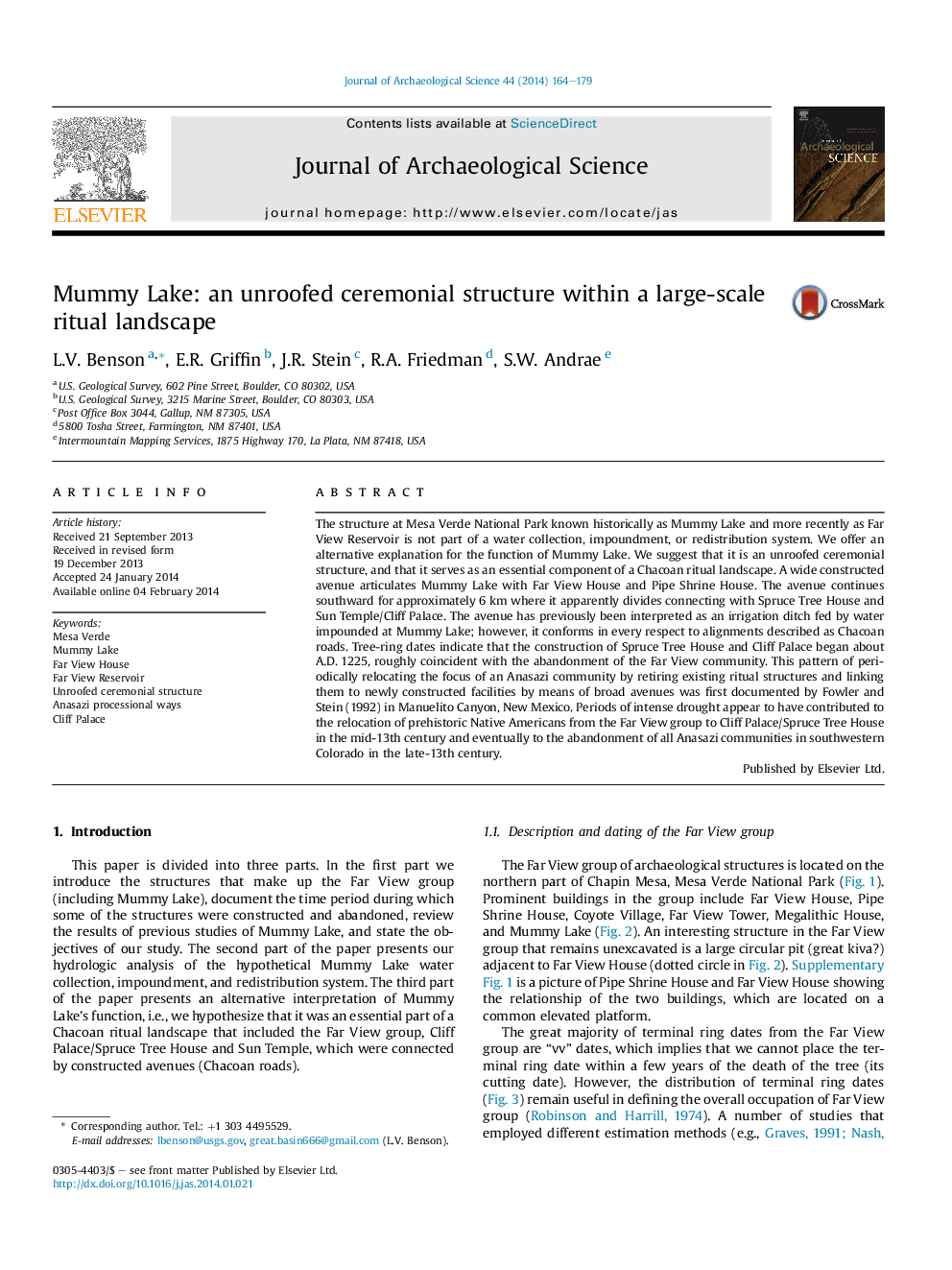| Article ID | Journal | Published Year | Pages | File Type |
|---|---|---|---|---|
| 1035391 | Journal of Archaeological Science | 2014 | 16 Pages |
•We modeled sediment and fluid transport to Mummy Lake.•Mummy Lake would never held much water.•Mummy Lake was an unroofed ceremonial structure.•Ceremonial pathways link Mummy Lake to Far View Village.•Ceremonial pathways link Far View Village to Cliff Palace.
The structure at Mesa Verde National Park known historically as Mummy Lake and more recently as Far View Reservoir is not part of a water collection, impoundment, or redistribution system. We offer an alternative explanation for the function of Mummy Lake. We suggest that it is an unroofed ceremonial structure, and that it serves as an essential component of a Chacoan ritual landscape. A wide constructed avenue articulates Mummy Lake with Far View House and Pipe Shrine House. The avenue continues southward for approximately 6 km where it apparently divides connecting with Spruce Tree House and Sun Temple/Cliff Palace. The avenue has previously been interpreted as an irrigation ditch fed by water impounded at Mummy Lake; however, it conforms in every respect to alignments described as Chacoan roads. Tree-ring dates indicate that the construction of Spruce Tree House and Cliff Palace began about A.D. 1225, roughly coincident with the abandonment of the Far View community. This pattern of periodically relocating the focus of an Anasazi community by retiring existing ritual structures and linking them to newly constructed facilities by means of broad avenues was first documented by Fowler and Stein (1992) in Manuelito Canyon, New Mexico. Periods of intense drought appear to have contributed to the relocation of prehistoric Native Americans from the Far View group to Cliff Palace/Spruce Tree House in the mid-13th century and eventually to the abandonment of all Anasazi communities in southwestern Colorado in the late-13th century.
